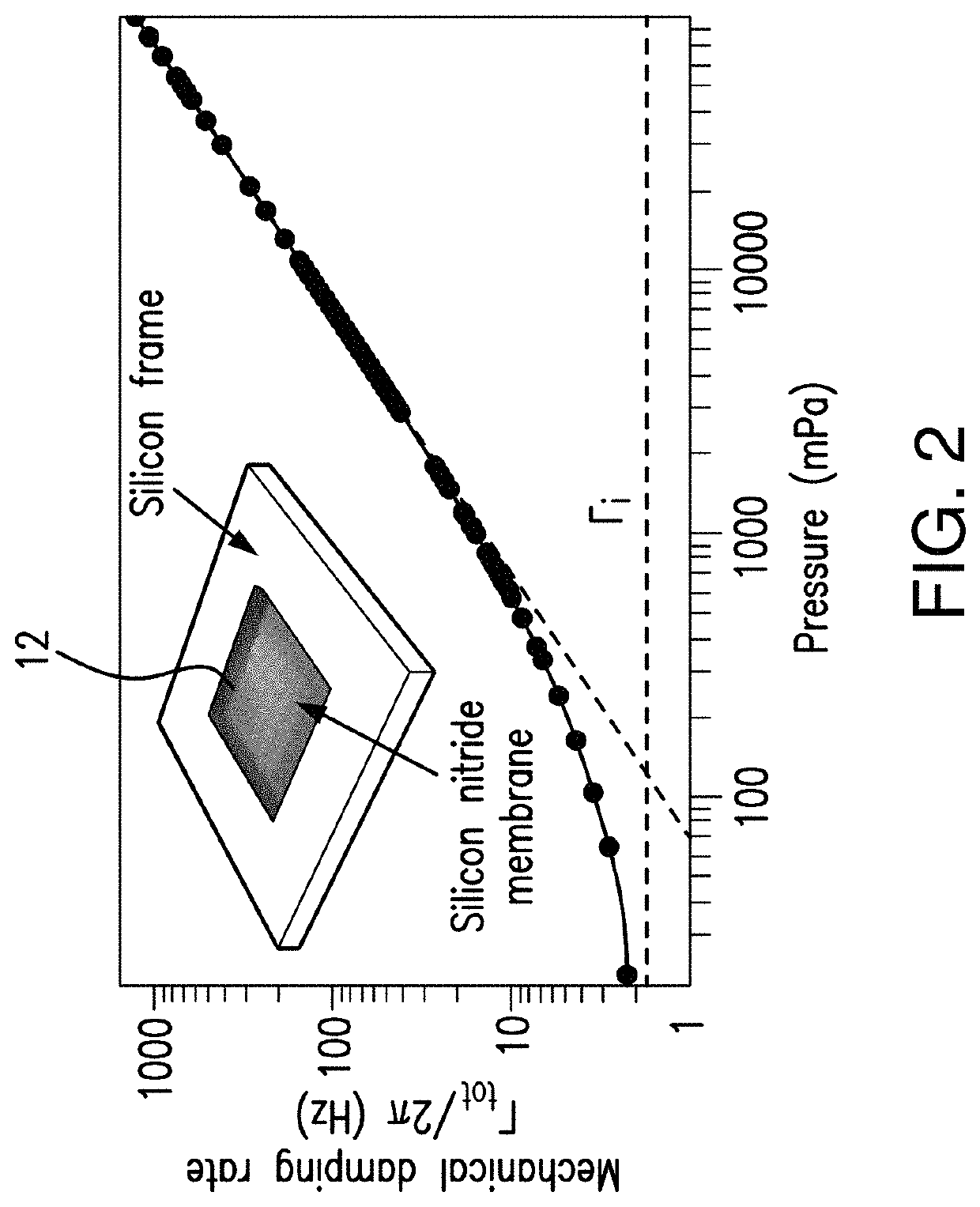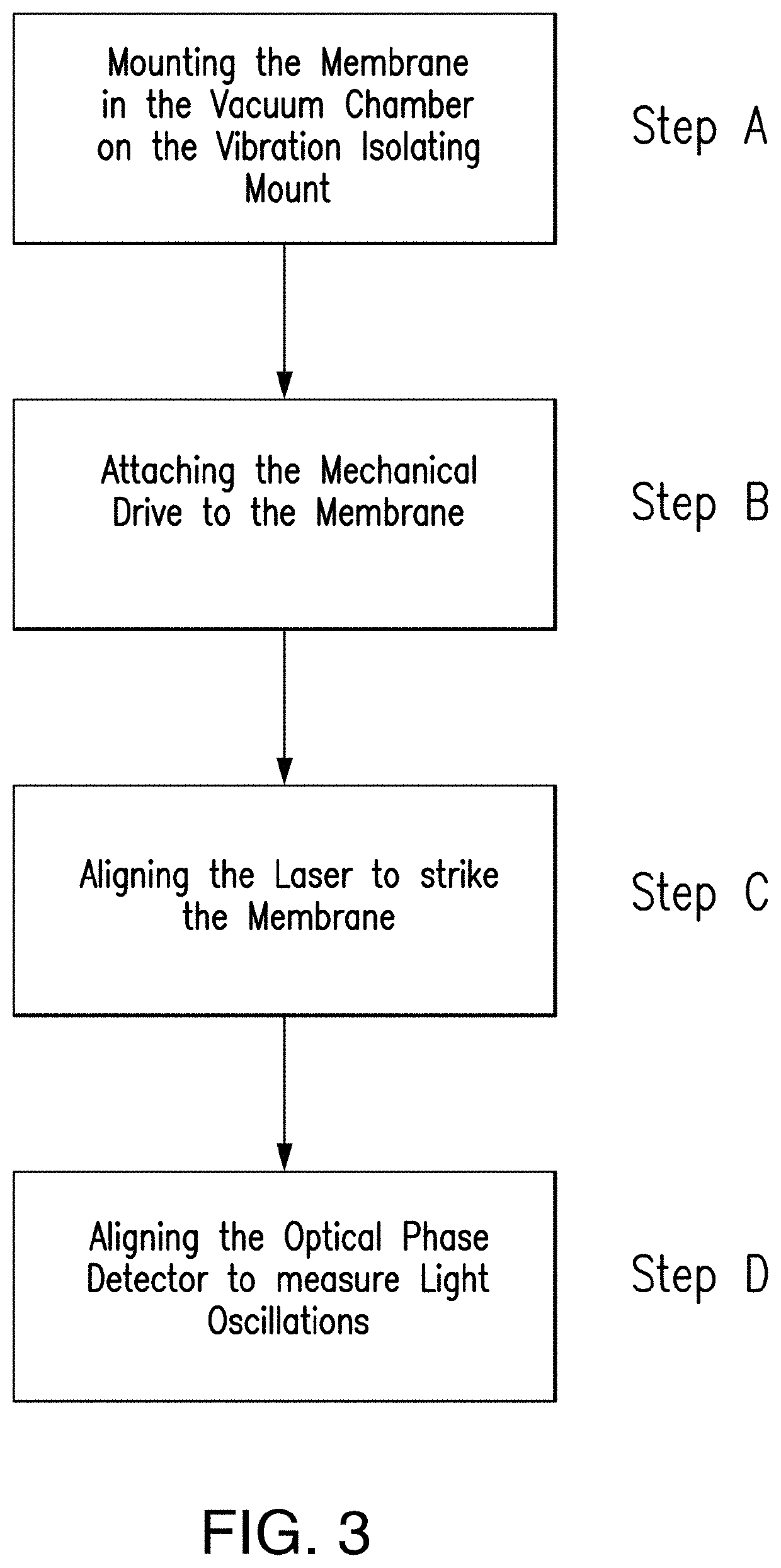Optomechanical pressure measurement system and method using the vibrational modes of a membrane
a pressure measurement system and membrane technology, applied in the field of pressure measurement systems, can solve the problems of high cost, inconvenient definition, and inability to accurately measure the pressure range of primary high-accuracy manometers, and achieve the effect of simple and robustness
- Summary
- Abstract
- Description
- Claims
- Application Information
AI Technical Summary
Benefits of technology
Problems solved by technology
Method used
Image
Examples
Embodiment Construction
[0067]The subject pressure measuring system uses properties of the vibration modes excited in a membrane, for example, damping properties. Mechanical damping by drag forces may be used for a wide range of vacuum pressure sensors. The subject system relates to a class of oscillating mechanical resonators, which are desirable for pressure measurements because they may operate as absolute pressure sensors with high linearity, operate at high frequencies away from DC to minimize low frequency noise and drift, often allow for direct computation of pressure dependence from first principles, and do not generate large amounts of heat. The linear dynamic range is limited by intrinsic mechanical dissipation at low pressure, and the transition from molecular flow to viscous damping at high pressure.
[0068]The subject system demonstrates the ideal properties for pressure measurements, which include a low intrinsic mechanical dissipation and a mechanical element that is smaller than the mean free...
PUM
| Property | Measurement | Unit |
|---|---|---|
| pressure | aaaaa | aaaaa |
| pressure | aaaaa | aaaaa |
| pressure | aaaaa | aaaaa |
Abstract
Description
Claims
Application Information
 Login to view more
Login to view more - R&D Engineer
- R&D Manager
- IP Professional
- Industry Leading Data Capabilities
- Powerful AI technology
- Patent DNA Extraction
Browse by: Latest US Patents, China's latest patents, Technical Efficacy Thesaurus, Application Domain, Technology Topic.
© 2024 PatSnap. All rights reserved.Legal|Privacy policy|Modern Slavery Act Transparency Statement|Sitemap



